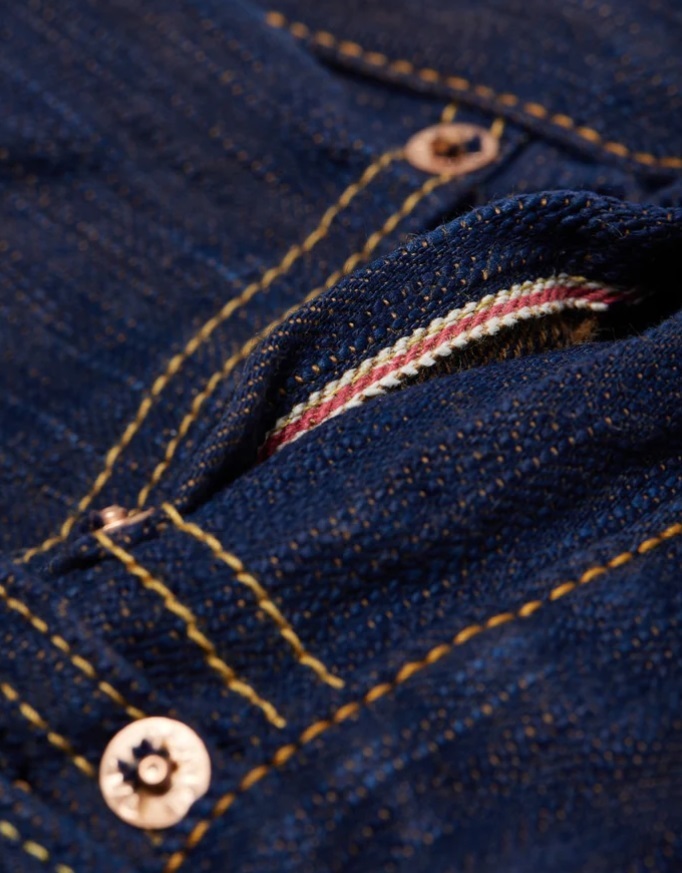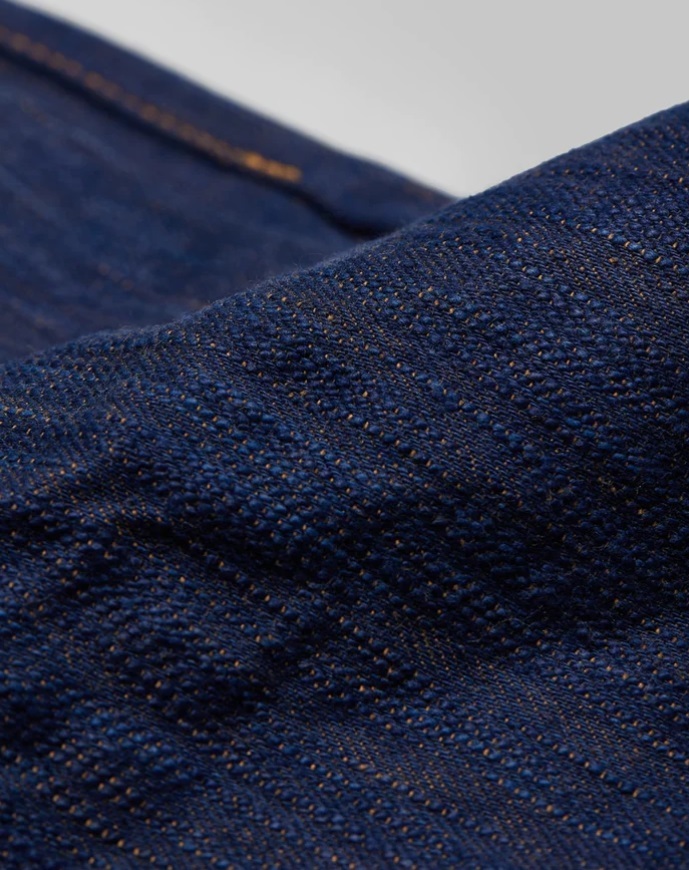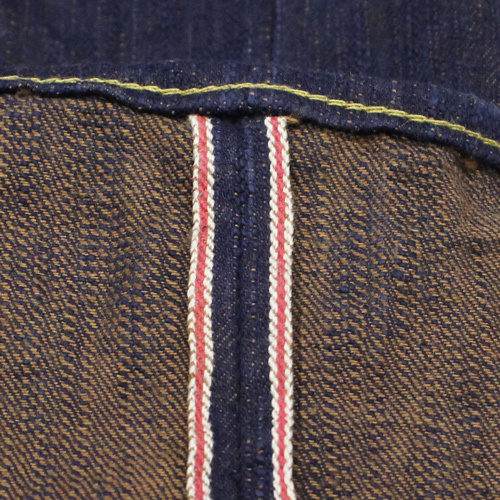 コインポケット
コインポケット 阿波正藍(lán)×柿渋 デニム
阿波正藍(lán)×柿渋 デニム セルビッジ
セルビッジ フロント
フロント 少數(shù)限定生産の阿波正藍(lán)染め×柿渋染めジーンズ新品です。
経糸は「阿波正藍(lán)染め」、緯糸は「柿渋染め」で職人による手絞りによる染色となっています。
阿波正藍(lán)染めの鮮やかな藍(lán)色に柿渋染め特有の茶色の糸と太糸スラブしによる超ローテンションで織り上げたデニムは通常のデニムとは全く異なる、特徴的なムラ感のあるデニム生地に仕上がっています。
日本の天然藍(lán)と柿渋の伝統(tǒng)染色技法による「日本のジーンズ」。このデニムでしか味わえない究極の色落ちと風(fēng)合いをぜひ。
シルエット:レギュラーストレート
サイズW34:ウエスト84㎝、股上29㎝、ワタリ幅33㎝、股下87㎝、裾幅21㎝(販売店表示)
※製品の1つを計(jì)測(cè)しているので誤差があります。
生地:綿100%、17.5oz、阿波蓼正藍(lán)(経糸)×柿渋(緯糸)
その他:ワンウォッシュ、和紙フラッシャー、ボタンフライ、セルビッジ、銅製リベット、隠しリベット、コインポケット裏セルビッジ、
鹿革パッチ(シリアルナンバー入り)、ジーンズと同じ生地で作った小物付き
MADE IN JAPAN
※マニア垂涎の幻の生地。やばいです。
※リジットの販売はございません。ワンウォッシュのみです。
※ジーンズショップで購(gòu)入。ワンオーナー。
※喫煙なし。ペットなし。
Description
These rare jeans are produced in a super limited number as the cotton yarns are dyed by the hand of craftsmen, and it took 14 months to finally complete the fabric.
The yarns used for the warp are hand dyed with indigo (Awa Shoai Aizome), and the weft yarns are dyed with persimmon tannin (Kakishibu). The yarn used for hand dyeing is thicker than that for machine dyeing. Therefore the denim fabric has a unique uneven finish that is completely different from ordinary denim.
The technique used in the indigo and persimmon dyeing is called "fermentation", with Awa indigo and persimmons as raw materials. Since it cannot be dyed in a dark shade at once, the process of dyeing, squeezing, and drying is repeated many times. It is said that the genuine colour of the Awa Shoai dyeing technique (hank dyeing) is gained after washing with water about 30 times, each of which the unharmonious colour is washed off until a deep shade is created. Also, the unique scent with an insect-repellent effect contributes to the atmosphere with seasonal transitions, giving the wearer peace of mind. In 1968, the "Awa Shoai dyeing technique" was designated as an intangible cultural property of Tokushima and is still inherited today.
These jeans are expensive, but the Japanese method of creating awa shoai and kakishibu dye is truly labour and incredibly time-consuming. For the awa shoai, leaves are carefully gathered from the indigo plant and placed under thick straw mats for months. Workers must perform daily maintenance to ensure the leaves have proper airflow and stay at a temperature of around 60 degrees Fahrenheit. The entire fermentation process takes roughly one full year, from picking the leaves to completion.
On the other hand, Kakishibu is also a traditional dyeing method with hundreds of years of tradition. The discolouration is caused by oxidation of the fermented juice of unripened persimmon fruit containing strong tannin. It also reacts to sunlight, so the colour changes slowly with time and sun exposure. Historically, Japanese people enjoyed the changing colours and texture of the natural reactions after one week, one month, and one year later. However, because of the fast-paced consumer society, Kakishibu traditions disappeared for many years.